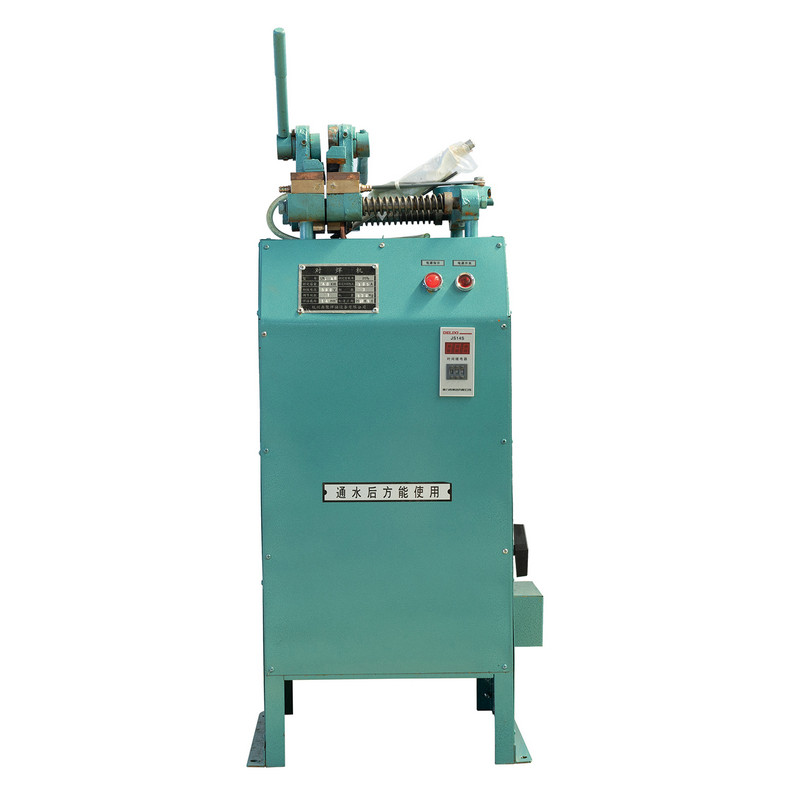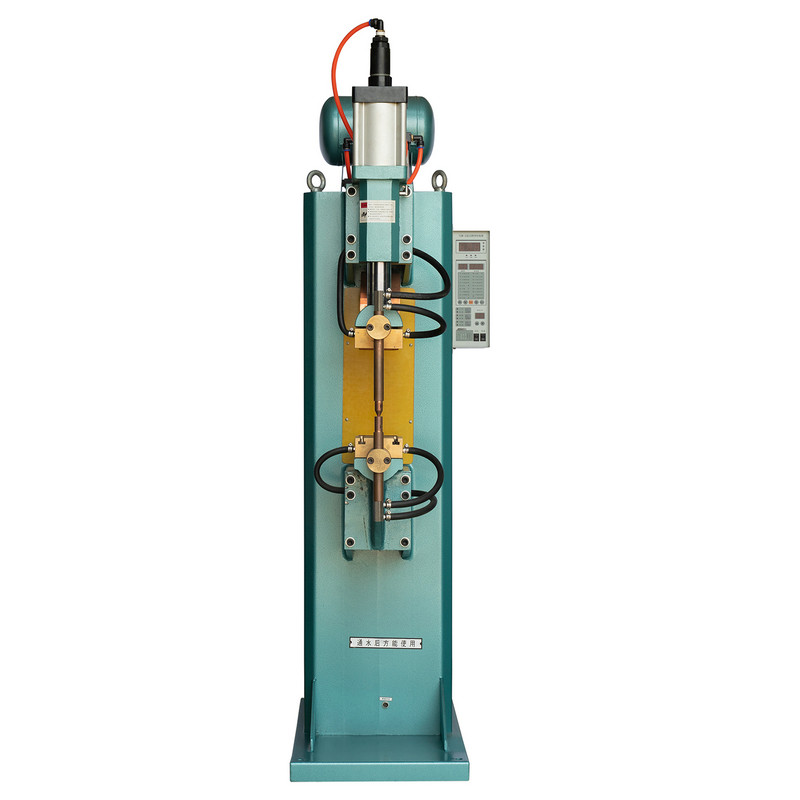In the realm of industrial manufacturing and metal fabrication, the equipment chosen is a direct reflection of the priorities held by a operation: efficiency, durability, safety, and return on investment. Among the various options available for creating strong, consistent welds, the metal shell 220v/380v pedal spot welding machine stands out as a particularly robust and reliable category. While its operational principle—using electrical resistance to fuse materials—is shared with other machines, its defining characteristic, the metal shell enclosure, is far from a mere aesthetic choice. This construction methodology is a critical engineering decision that profoundly impacts the machine’s performance, lifespan, and overall value.
The Foundational Role of Structural Integrity and Vibration Damping
At its core, a spot welding machine is a device that manages immense electrical energy and translates it into precise mechanical force. The process involves the instantaneous passage of a very high current through metal workpieces, sandwiched between two electrodes under significant pressure. This action generates tremendous electromagnetic forces and physical shock within the machine’s internal components. A flimsy or inadequately supported frame would quickly succumb to these stresses, leading to misalignment, inconsistent performance, and premature failure.
The primary advantage of a metal shell construction is its unparalleled contribution to structural integrity. Unlike housings made from reinforced plastics or thinner gauge materials, a heavy-gauge steel shell acts as a rigid, immutable chassis. This chassis serves as a stable foundation to which all critical components—the main transformer, the welding arm assembly, the pedal actuation mechanism, and the electronic control system—are securely mounted. This ensures that these elements remain in perfect alignment over thousands, and even hundreds of thousands, of welding cycles. The consistent accuracy afforded by this rigidity is paramount for achieving repeatable weld quality. Every weld is performed with the same electrode force and positioning as the last, eliminating a key variable that can lead to weak or inconsistent bonds.
Furthermore, the mass and density of the metal shell are exceptional at damping vibration. The energy pulses from each weld are absorbed and dissipated throughout the entire mass of the machine’s frame, rather than being allowed to reverberate through individual components. This dampening effect protects sensitive internal electronics from the cumulative damage caused by constant shaking and reduces operator fatigue by minimizing the transmission of harsh vibrations to the floor and the user. For a metal shell 220v/380v pedal spot welding machine, this stability is non-negotiable, as it is designed to handle the higher power outputs that generate these significant forces.
Superior Thermal Management and Heat Dissipation
Resistance spot welding is an inherently thermal process. The very principle of operation relies on generating intense heat at the point of contact between the workpieces. While this heat is focused on the weld nugget, a considerable amount of waste heat is also generated within the machine itself, primarily in the main transformer and the electrical conductors. If this heat is not effectively managed, it becomes a silent killer of electronic components, leading to insulation breakdown, solder joint failure, and a drastic reduction in the lifespan of the transformer.
A metal shell is intrinsically superior at managing this thermal load. Metals, particularly steel and aluminum, are excellent conductors of heat. The shell acts as a massive heat sink, drawing thermal energy away from the internal components and radiating it safely into the surrounding air. This natural convection process is a continuous and passive cooling mechanism that operates for the entire duration of a shift. This is a critical differentiator for a 220v/380v pedal spot welding machine operating on long production runs. A machine with a poor ability to dissipate heat will see a rapid rise in internal temperature, eventually forcing a shutdown to prevent damage—a phenomenon known as overheating protection kicking in, which halts production and kills efficiency.
The robust construction also allows for more intelligent design features that enhance cooling. Ventilation louvers can be strategically punched and formed into the metal shell to create optimized airflow paths without compromising the structure’s strength. These louvers, combined with the thermal mass of the frame, ensure the machine operates within a safe temperature range, supporting a high duty cycle and ensuring consistent power output from the first weld of the day to the last. This reliable thermal performance is a key factor for battery pack assembly and other high-volume applications where downtime is not an option.
Enhanced Durability and Long-Term Reliability in Industrial Settings
An industrial environment is unforgiving. It is characterized by airborne particulate matter, accidental impacts from workpieces or tools, exposure to coolants or oils, and the general rigors of daily use. Equipment must be built to withstand these challenges. The metal shell is the first and most important line of defense against this abuse.
The durability of a heavy-gauge steel enclosure is objectively superior to that of alternative materials. It is resistant to dents, cracks, and deformation from incidental contact. This physical toughness protects the valuable and delicate components housed within. A dropped tool or a swinging metal sheet that would shatter a plastic housing or bend a thinner metal cover will simply bounce off a properly constructed metal shell. This directly translates to reduced maintenance costs, fewer repairs, and a longer operational lifespan for the entire machine.
This resilience also contributes to overall operator safety. A compromised housing can expose live electrical parts, creating a severe electrocution hazard. The inherent strength of the metal shell maintains this critical barrier between the user and the high-voltage components. Furthermore, the weight and stability provided by the metal construction make the machine less likely to tip or shift during the forceful pedal operation or when handling heavy workpieces. This is a fundamental, yet often overlooked, aspect of a safe workstation setup. When investing in a metal shell 220v/380v pedal spot welding machine, one is investing in a tool designed for decades of service, making it a cornerstone asset for metal fabrication shops, automotive repair facilities, and hardware manufacturing lines.
Electrical Shielding and Mitigation of Electromagnetic Interference (EMI)
A less visible but equally important advantage of the metal shell is its function as a Faraday cage. The process of spot welding involves the rapid switching of very high currents, which generates powerful bursts of electromagnetic interference (EMI). This EMI can radiate outwards, potentially disrupting nearby sensitive electronic equipment such as computers, CNC controllers, and precision measurement tools.
The continuous metal enclosure of a metal shell spot welder effectively contains this electromagnetic radiation within itself. The shell acts as a shield, preventing the noise from polluting the local environment and ensuring compliance with general electromagnetic compatibility (EMC) guidelines. This is crucial in modern workshops where multiple pieces of digital equipment operate in close proximity. Containing EMI is not just about being a good neighbor to other machines; it also protects the welder’s own internal control systems from external interference, ensuring that the timing and current regulation circuits function with precision. This results in a more stable welding current output and contributes to the machine’s renowned reliability.
Practical Considerations for the User: Grounding, Maintenance, and Upgradeability
The benefits of a metal shell extend into practical, day-to-day user experience. A metal chassis provides a perfect, low-resistance path for electrical grounding. The entire body of the machine can be safely and effectively grounded to the building’s earth point, a fundamental safety requirement for any high-power electrical appliance. This ensures that in the event of an internal electrical fault, the current has a safe path to ground, likely triggering a circuit breaker and preventing the outer shell from becoming energized.
From a maintenance perspective, metal shells are typically designed with service in mind. Access panels and covers are robust and can be repeatedly removed and reinstalled without losing their structural integrity or fit. This allows technicians easy access to internal components for inspection, maintenance, or replacement. The inherent strength of the design also means that the machine can be moved using lifting equipment without fear of damaging the housing, an important consideration for heavy industrial equipment.
Moreover, the solid platform offered by a metal shell construction often allows for greater upgradeability and customization. The strong frame can support the addition of aftermarket accessories such as larger welding arms, different electrode holders, or specialized fixturing without flexing or losing alignment. This future-proofs the investment, allowing the machine to adapt to new welding applications or evolving production needs.
Table: Key Advantages of Metal Shell Construction at a Glance
| Advantage |
Impact on Performance & Operation |
| Structural Rigidity |
Ensures component alignment, enables consistent weld quality, and withstands intense electromagnetic forces. |
| Vibration Damping |
Protects internal components, reduces operator fatigue, and minimizes noise. |
| Superior Heat Dissipation |
Prevents overheating, supports high duty cycles, and extends the lifespan of the transformer and electronics. |
| Physical Durability |
Withstands impacts and abuse in industrial settings, reducing downtime and repair costs. |
| EMI Shielding |
Contains electromagnetic interference, protecting nearby sensitive equipment and ensuring stable operation. |
| Inherent Safety |
Provides a robust barrier against electrical shock and allows for secure grounding. |
| Serviceability |
Facilitates easier access for maintenance and supports the addition of custom accessories. |
Conclusion: An Investment in Performance and Longevity
The choice of a metal shell 220v/380v pedal spot welding machine is a definitive decision to prioritize long-term performance and reliability over short-term cost savings. The metal shell is not a simple box; it is an integral, active component of the machine’s engineering system. It provides the essential foundation for structural integrity, the necessary mechanism for effective thermal management, and the durable armor required to survive in a demanding workshop. It ensures electrical safety for the operator and protects the machine’s own electronics from both physical and electromagnetic harm.
For buyers evaluating their options, the construction quality should be a primary consideration. While the specifications of welding current, thickness capacity, and electrode force are critical performance metrics, they are all contingent upon a platform that can maintain them consistently over time. The metal shell is that platform. It is the feature that guarantees the machine will deliver on its performance promises not just for weeks or months, but for years of dependable service. In the world of industrial spot welding equipment, the advantages of metal shell construction are clear, making it the superior choice for any serious professional application.









